The power of problems.
Why a problem statement is the captivating first step in your communications

KEVIN L. BROWN
The next time someone asks what you do, don’t actually start your elevator pitch with what you do.
Same goes for your website homepage, one-sheeters, or pitch deck.
Because a problem statement from your theory of change is the first, most powerful step in communications.
It’s why movies need drama. Or fiction books build tension before resolution. Conflict gives any story shape between the beginning and end. Literature professor Joseph Campbell famously documented this truth in The Hero’s Journey, proving the template has been used successfully throughout time — from ancient myths to modern Bollywood scripts.
In short: audiences must understand the issue you’re addressing before they can care about your mission. They need to lean in. Be invested first.
This psychology dates back to cave people. More than 200,000 years later, humans are still hard-wired to listen for how they can thrive or survive. Emotions are the first screen for all information received, according to Harvard Business Review. Because of the primacy of emotions, people hear bad news first and loudest.
So hit them with it.
It feels counterintuitive. Because we hate to dwell on the issues or cast a negative light on the communities we serve. And we never want to be dramatic or use deficit-based language. Plus, changemakers are often solution-oriented. Thus, it’s hard for social ventures to break our tendency to talk about ourselves and our work.
But never open with ‘we’ language. Always lead with the problem you’re solving… first.
Here’s how, in three steps.
“Conflict creates tension and tension is an essential life attribute. Without tension there is banality, boredom, and predictability.”
SUSAN COHEN
STEP 1
Start with your theory of change.
Most changemakers know — even if only instinctually — the core social challenge they’re trying to solve. The key is stating it clearly, succinctly, and articulately for the world to know it too.
A tight-knit problem statement will focus your programs and external comms alike.
Many social challenges worth addressing — like poverty, hunger, and health — will likely take generations to finally solve. Meaning, there’s plenty of work to be done in any single focus area. And many sub-problems within the main problem.
But too often, social ventures reach beyond core causes and try to address many problems at once.
The very first exercise in the Mighty Ally theory of change process is the problem statement — because what you decide here will greatly affect the rest of your theory of change. And what you communicate here will greatly affect how audiences listen to the rest of your story.
So describe the key social challenge your work addresses. Why is this a problem and why should others take notice?
- Keep it concise! 6–10 sentences max.
- Don’t worry about perfect wording. That can come in your messaging.
- Align your statement with one of the Sustainable Development Goals.
- Include a master data point (or two!) to reinforce the need.
With our client Humanity Crew, their work touched on a number of issues. The surging number of refugees. The aid system not prioritizing mental health. Trauma services for children come too late. Significant societal costs. And more. So here’s how we weaved it all together, from macro to micro — like an accordion stretching both in and out.
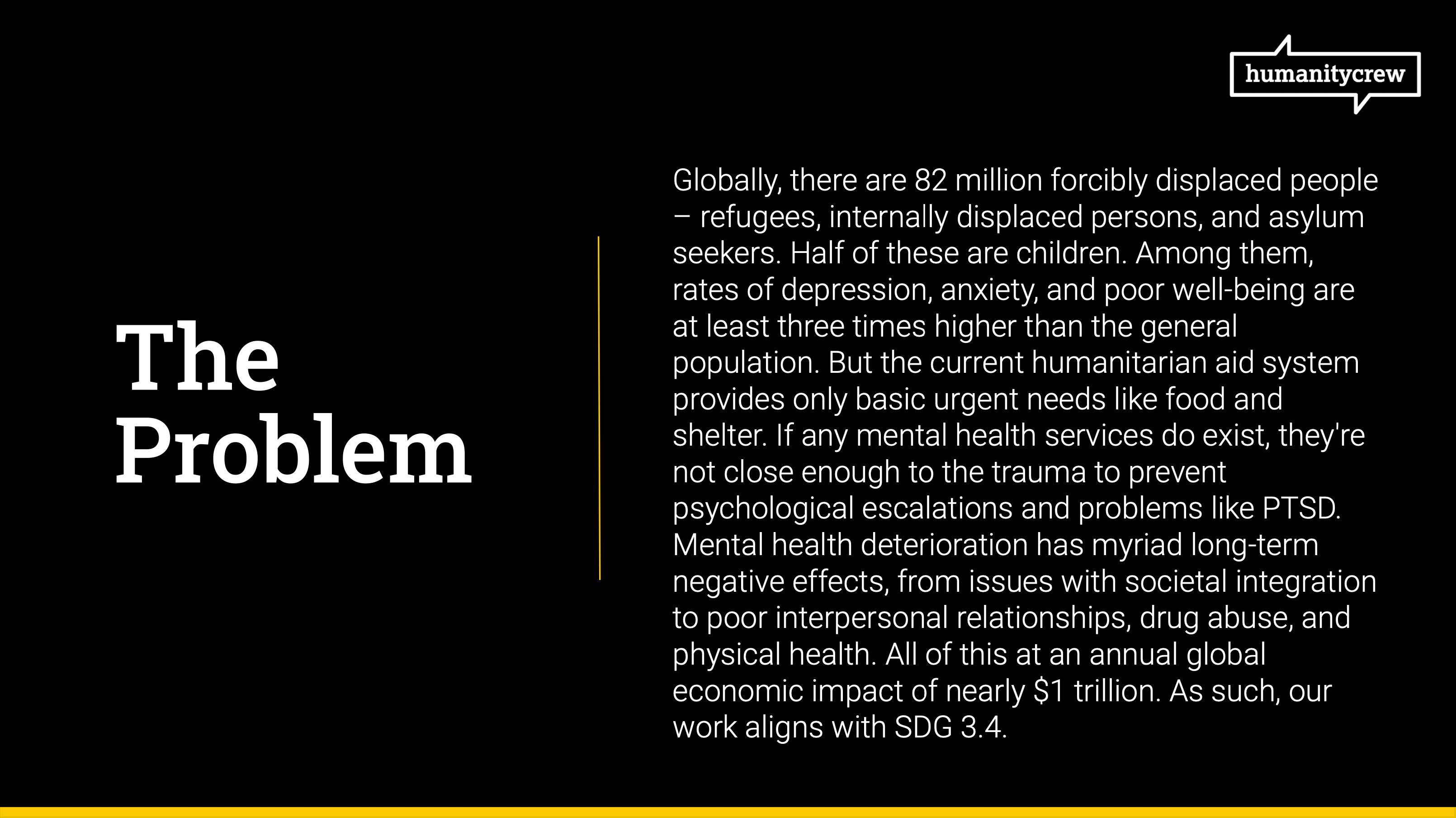
“A problem properly stated is half solved.”
CHARLES KETTERING
STEP 2
Find the soundbite that hooks.
The full problem statement paragraph from your theory of change will be useful in some places. Like copying/pasting into a funding application. Or maybe in a more extended copy block on a website subpage.
But in many settings, you’ll need a much shorter soundbite version. Because the average human attention span is just eight seconds — shorter than a fish! You’ll have to hook your audience immediately. Or they’re lost.
We often hear leaders say, “there’s no way we can dumb down this issue to 1–2 sentences. It’s complex and interconnected.” Of course that’s true. In fact, many of these problems have deep, tangled roots in colonialism. So this stuff goes way back. Then there’s ongoing greed, corruption, apathy, and countless other issues making society’s problems worse.
So think of this 1–2 sentence soundbite as just the tip of an iceberg. You’re only sharing the 10% above water, so to speak. Then your audience can ask if they want to hear about the other 90% below the surface.
Still not comfortable cutting out so much background information? Here’s a comms trick. Start with your problem statement soundbite, then say “I’m happy to share more about the problem we’re tackling. But first, I’ll tell you about our solution…” This approach lets you stay brief, indicates you have much more knowledge on the topic, and invites collaboration. Give it a try.
We practice what we preach at Mighty Ally. And know that nonprofits and social enterprises get stuck in size for many reasons — poor brand communications, first-time CEOs, missing M&E, inequality in philanthropy, and more. But we still just tee up the main challenge we solve for — keeping it short, sweet, and memorable. And that is: despite impactful products and programs, most social ventures can’t bring in enough revenue to grow.
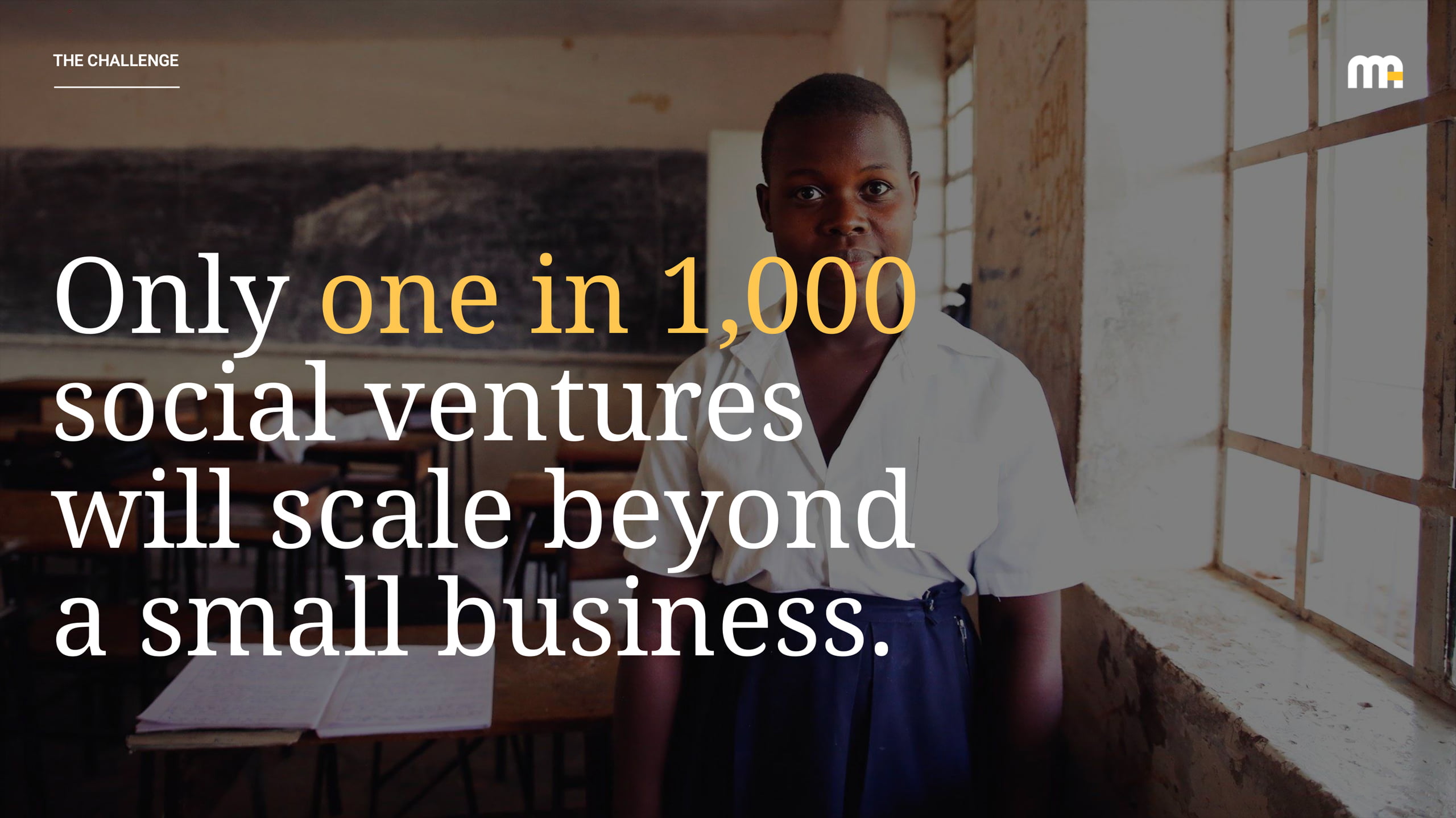
And here’s another example of distilling the issue. We’re currently working with Community Health Impact Coalition on a new brand. One thing they’ve always done well: bite-sized messaging, like the campaign image below. In reality, there are myriad challenges involved with most community health workers not being salaried, skilled, supervised, or supplied. But CHIC successfully uses lack of payment, at times, to crack open the tip-of-the-problem iceberg.
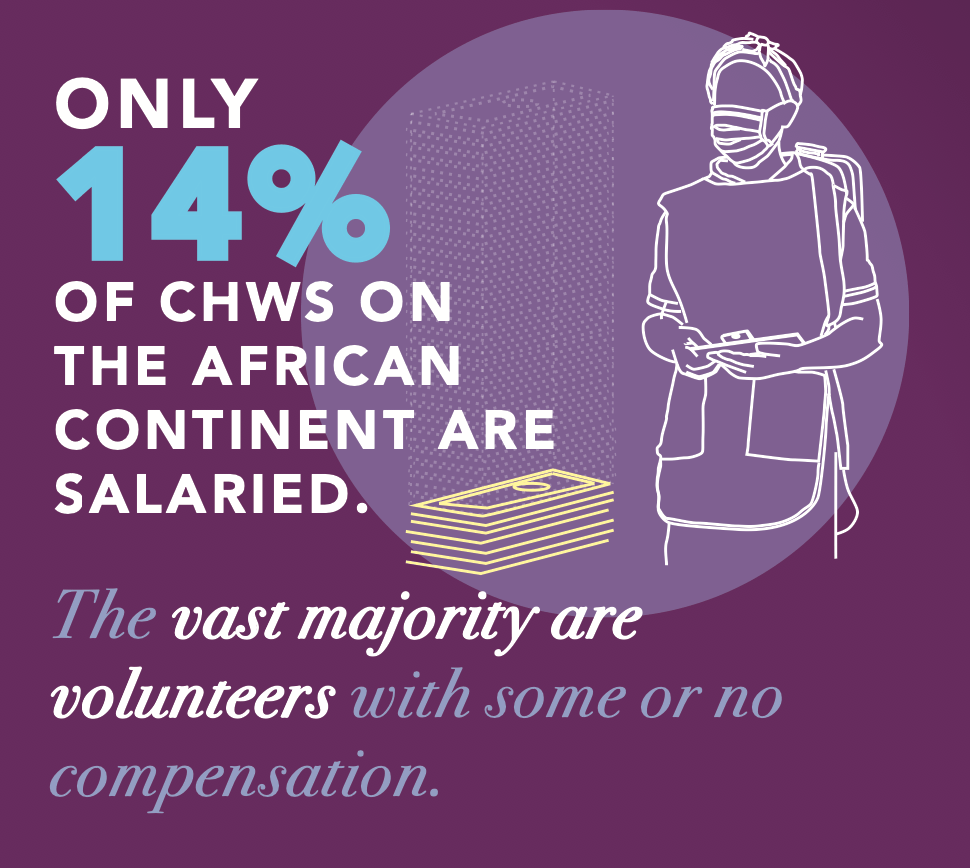
STEP 3
Weave problems into your marketing communications.
Now that you’ve determined your soundbite to hook audiences, use it. Everywhere! No exaggeration to say there’s not a single piece of comms you produce that wouldn’t benefit from problem language. Most of the time: you should lead with problem language.
Start your elevator pitch with the challenge. Explain the problem on your website — ideally the homepage header area. And weave it into materials like pitch decks, even when you’re actually talking about your own work.
We kept the challenge front and center when we created an investment profile for EarthEnable, alongside our fundraising allies at Raise Up. The executive summary on page 2 leads with, “We spend half of our lives in our homes. They should not be making people sick.” The next page focuses on The Challenge, with four compelling data points. And even once we get into EarthEnable’s products, notice below how they’re ‘selling’ their solution while keeping the comms pinpointed on the problems they’re solving.
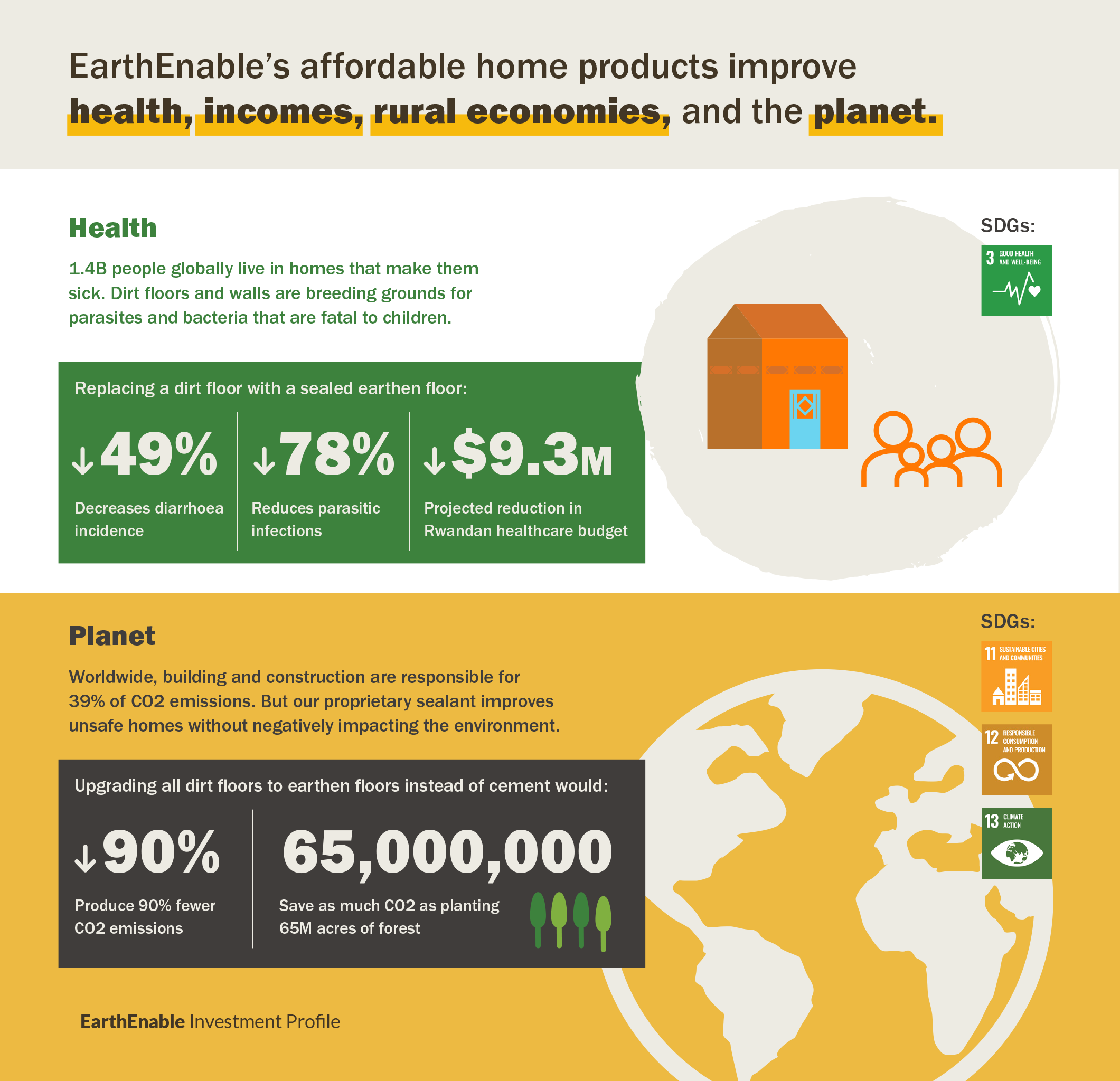
For client Justice Defenders, the problem statements were engaging and unknown to many donors. So we dedicated an entire page of their website to Why Justice information. Without this critical, bigger-picture framing, some funders could easily dismiss the mission as just helping guilty people gain freedom. But the ripple effect is irrefutable.
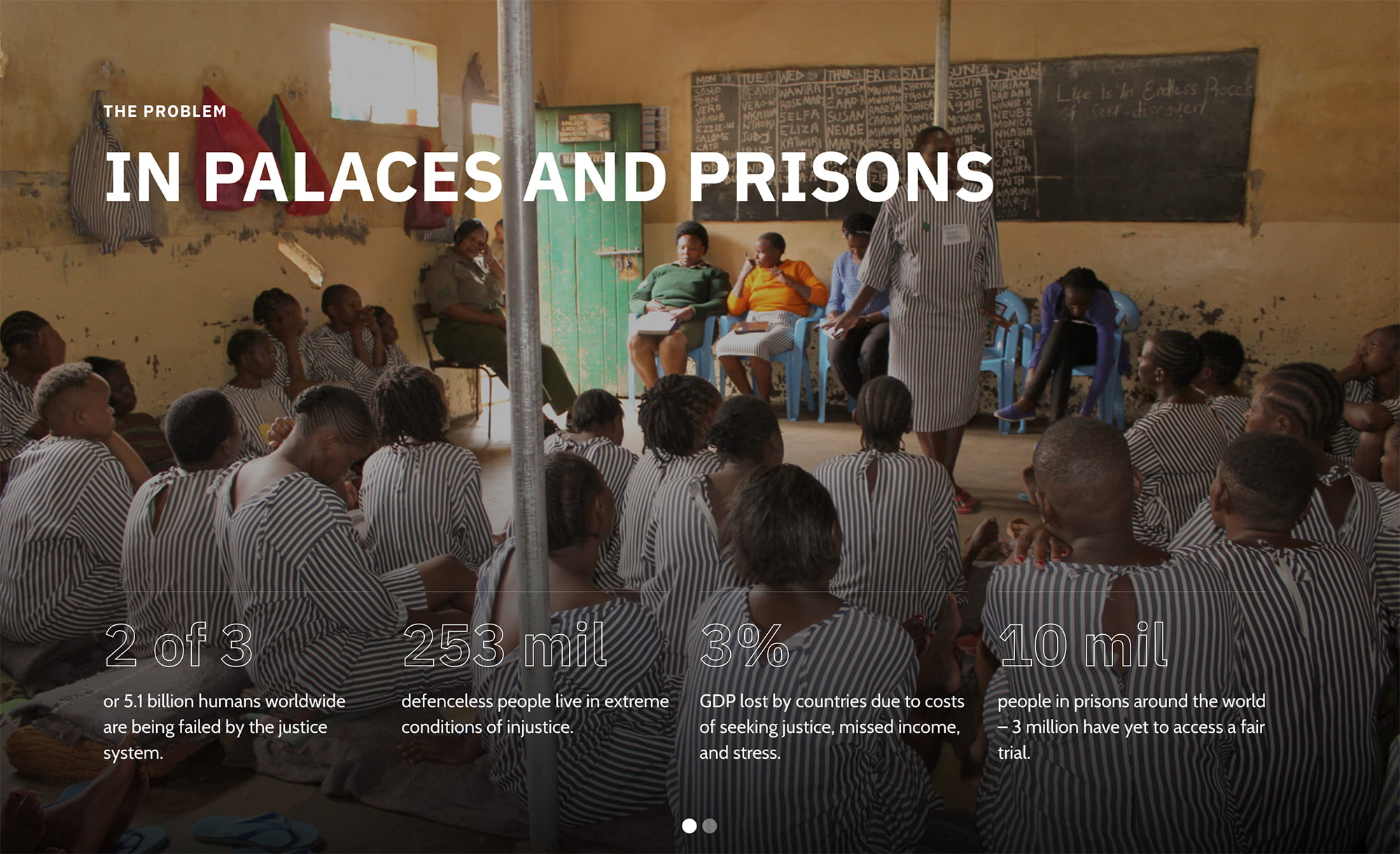
Even funders need to position their theory of change via a unique set of problems they solve. Otherwise, it’s easy to get lost in the noise of the countless foundations and impact investors all tackling the same obstacles. In the messaging platform we created for Mercy Corps Ventures, we led their elevator pitch with a twist. Not that the problem is the money to raise; instead, the issue is capital sitting on the sidelines.

A final word, about focus.
There are 17 Sustainable Development Goals containing more than 230 unique impact indicators. IRIS+ is the generally accepted system for measuring, managing, and optimizing impact — it has 736 different metrics in its catalog. Meaning, there are more problems than solutions in the world.
Nobody has figured out how to solve poverty and injustice. Not the UN, Gates Foundation, or the world’s most prominent INGOs. So no social venture — regardless of size — can simultaneously address more than a few problems.
If your issue area requires interventions other than your own, name them as partners in your theory of change. Then partner up! But don’t try to solve it all.
They say doing anything is possible, but doing everything is not. So focus, focus, focus.
Read more articles
Ready to get fundable and findable?
We engage three ways: consulting, training, and field building.
